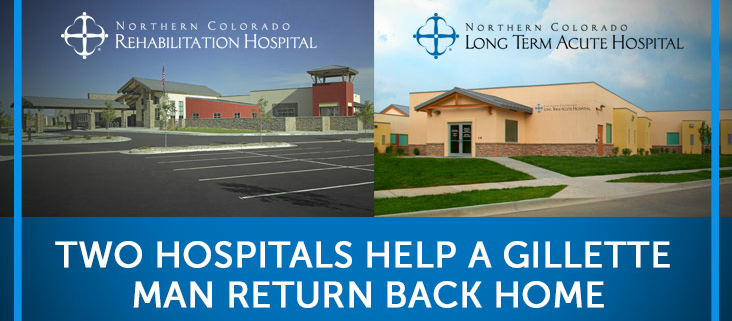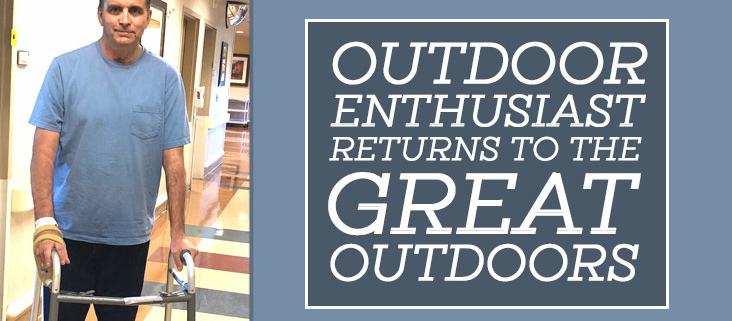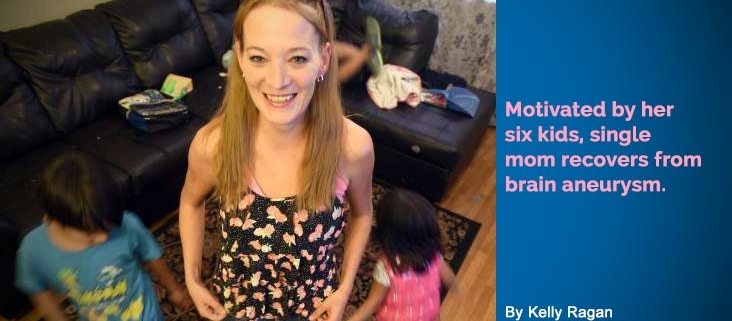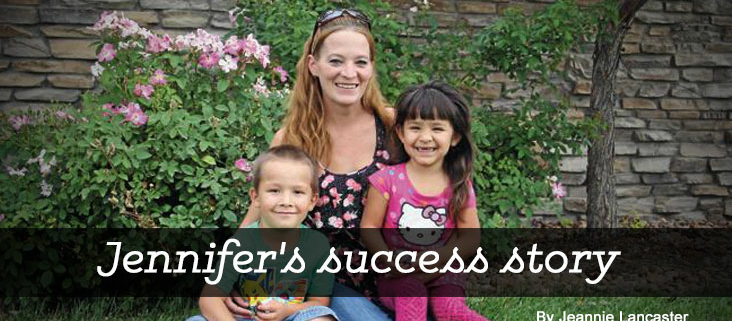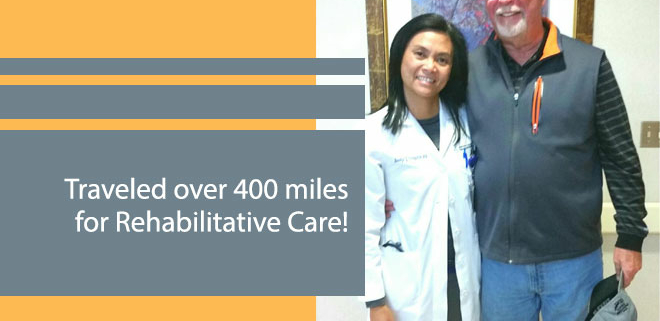Jennifer Flores credits family, Northern Colorado Rehabilitation Hospital for stroke recovery.
When the pain first hit Jennifer Flores, she thought it might be another of the migraines she had suffered from since she was 14. But she quickly realized this was something very different.
“The pain was horrible,” she said. Flores began having difficulty with her speech and losing control of the left side of her body. It was June 2014, and she was in her Greeley home, alone with her six young children.
“I started screaming in pain,” she said. “It freaked my kids out.”
She told her 10-year-old son to call his dad, but his reply was “No, I’m calling 911.” When she insisted, he did call his father, but immediately afterward dialed 911.
“I was awake the whole time,” Flores said. “The paramedics got to the house, and they did a neurological assessment. I couldn’t move my left arm.”
What Flores didn’t know was that she was experiencing a hemorrhagic stroke, caused by a ruptured aneurysm in her brain. According to the Centers for Disease Control, “a hemorrhagic stroke happens when an artery in the brain leaks blood or ruptures (breaks open). The leaked blood puts too much pressure on brain cells, which damages them.”
A more common type of stroke is an ischemic stroke, which is usually the result of a blocked artery, often caused by a blood clot. Ischemic strokes account for “87 percent of all strokes,” noted the Mayo Clinic.
Flores was taken to North Colorado Medical Center, where doctors assessed her condition. A CT was ordered, but before the scan could be taken, she suffered a massive seizure. A scan later revealed that she had suffered a ruptured aneurysm in her brain. Soon afterward, she was transported by medical helicopter to Swedish Medical Center in Denver.
Physicians at Swedish Medical Center placed Flores in a drug-induced coma and later repaired the ruptured aneurysm. She remained in the coma in the critical care unit for two weeks, before being awakened and transferred for another week to the neuro unit.
When it came time for Flores to be moved to a rehabilitation hospital, the decision was an easy one for her family. They had been pleased with the care Flores’ mother had received at Northern Colorado Rehabilitation Hospital, following a stroke, three years earlier.
Although both women’s strokes were hemorrhagic, they were also different. Flores’ stroke was caused by the burst aneurysm, while her mother’s stroke was caused by an injury after a fall.
When she first arrived at Northern Colorado Rehabilitation Hospital, Flores was very weak. She couldn’t walk and struggled with swallowing and speaking. “I couldn’t make sense of things,” she said. “It’s like I woke up on a different planet.”
Short-term memory loss was a significant challenge for her after her stroke. When staff members asked her if she was married, she replied, “No,” although she was. When asked if she had children, she again responded, “No.”
“If they asked the questions, I would say no,” said Flores, “but then they’d show me a picture of my family and ask ‘Who is this?’ and I’d answer, “That’s my kids.”
“This is common with this kind of stroke,” shared Beth Bullard, CEO of Northern Colorado Rehabilitation Hospital.
During her 13 days at Northern Colorado Rehabilitation Hospital, Flores received speech, occupational and physical therapy to aid her in her recovery. “The techniques we use here facilitate brain activity, creating new pathways in the brain,” added Bullard.
“We make it pertinent to a patient’s life and what he/she knows and what they know is familiar, so that helps the brain react well,” said Bullard. “The more repetition we can bring in, the faster we can get those connections to talk to each other again.”
“And that’s exactly what they did,” said Flores. “You have to relearn how to use your body again and how to have your body and your brain work together.”
Bullard noted that Flores’ therapy focused on many of ‘the things that we do every day that we take for granted — to get dressed, to brush your teeth, make a bed, go to the bathroom. These are the things that we do without thinking, but when you have an injury or disability they can become an incredible challenge.”
Though at times she felt like giving up, Flores continued to work hard. “I was determined to get better for my kids. They remained my focus.”
Following her release from Northern Colorado Rehabilitation Hospital, Flores received in-home therapy for a short time. In August 2015, physicians placed a stent in her brain to deal with three other aneurysms, which were discovered while repairing the ruptured aneurysm.
“I’m doing better now than I was before,” said Flores. “I don’t have the headaches and exhaustion that I had before the aneurysm.”
Flores and her husband divorced a year after her stroke. She returned to school and finished her associate degree in May of this year. She hopes to continue her education. Working and caring for her six children is her primary focus right now.
When she reflects on her experience and its possible impact on her children, she shared, “I want them to look and see that mom did it. I was paralyzed. I was divorced. But I fought my way back. I did it!”
